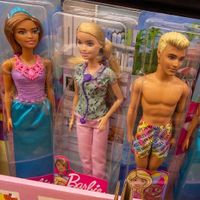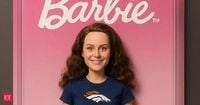In a whimsical twist on self-representation, social media users are diving headfirst into the latest viral trend: transforming their images into AI-generated Barbie dolls and action figures. Dubbed the "Barbie Box Challenge," this phenomenon harnesses the power of generative AI tools like ChatGPT and DALL·E, allowing individuals to create hyper-realistic representations of themselves styled as iconic dolls.
As the trend gains momentum, participants are not just uploading their photos; they are also injecting personal flair by incorporating elements like coffee mugs, pets, and favorite outfits into their doll images. This playful approach has sparked a wave of creativity online, with hashtags like #BarbieBoxChallenge and #AIBarbie flooding platforms such as LinkedIn, Instagram, and TikTok.
The process to create these miniature versions of oneself is surprisingly straightforward. Users begin by uploading a clear, high-resolution photo, preferably a full-body shot. Next, they use ChatGPT to craft a specific prompt that details how they want their doll to look. For instance, one might instruct, "A hyper-realistic Barbie doll based on a young woman with long brown hair, smooth glossy skin, big sparkling eyes, wearing a pink ball gown, high heels, and a tiara. Hair is shiny and curly. Background is pastel pink, soft lighting, 4K resolution." This type of prompt ensures that the AI tool generates an image that closely mimics the user's desired aesthetic.
Moreover, the trend has seen notable figures joining the fun. Robert Irwin, son of the late Steve Irwin, recently showcased his AI-generated doll, complete with elements from his advertising campaigns. Meanwhile, British politician Dawn Butler debuted her own doll, accessorized with a mini Union Jack flag, reflecting her professional persona.
However, not everyone is on board with the trend. Critics are raising concerns about the environmental impact of generative AI technologies. Professor Gina Neff from Queen Mary University London highlighted that tools like ChatGPT consume vast amounts of energy, with data centers powering these applications using more electricity in a year than 117 countries. "We have a joke in my house that every time we create one of these AI memes, it kills a tree," quipped Lance Ulanoff, US editor of TechRadar, emphasizing the ecological costs of such digital creativity.
In addition to energy consumption, there are worries about data privacy and copyright issues. Neff pointed out that the systems generating these images often blend brands and characters without accountability, raising questions about the ethical implications of using copyrighted data without proper compensation.
Despite these concerns, the allure of the AI Barbie trend remains strong. Many users are captivated by the novelty and nostalgia of seeing themselves reimagined as dolls, complete with tailored accessories that reflect their personalities. Some choose to include items like laptops, pets, or even their favorite coffee cups, creating a unique representation that resonates with their real-life identities.
The trend originally gained traction on LinkedIn, where professionals shared their AI-generated action figures, often styled with tools of their trade. This corporate spin quickly evolved into a broader cultural movement, as users embraced the playful nature of the trend, tapping into the ongoing popularity of Barbiecore.
To participate in the Barbie Box Challenge, users must be mindful of the prompts they create. ChatGPT has restrictions on prompts that closely mimic branded styles, so users are encouraged to steer clear of direct references to Barbie. Instead, they can opt for phrases like "draw an action figure toy of the person in this picture" while specifying the desired accessories and box design.
As the trend continues to evolve, the demand for AI-generated images has skyrocketed, leading to server overloads and prompting OpenAI's CEO, Sam Altman, to urge users to "please chill" as daily active users surpassed 150 million. The excitement surrounding this trend suggests that AI-driven creativity is becoming an integral part of our digital lives, for better or worse.
While the Barbie Box Challenge offers a fun and engaging way for individuals to express themselves, it also serves as a reminder of the broader implications of generative AI. As users create their doll versions, they must consider the environmental and ethical ramifications of the technology they are employing. Ultimately, as this trend unfolds, it will be interesting to see how the conversation around AI usage continues to develop.





